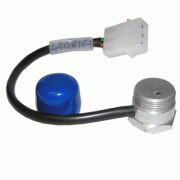 Have you ever wondered what makes your flight comfortable and perfect? Of course, your answer will be a qualified pilot and partly you are right. However, you need to consider also the aircraft you flew in. There are tiny devices that made the pilot show his expertise, these devices are called sensors.
Have you ever wondered what makes your flight comfortable and perfect? Of course, your answer will be a qualified pilot and partly you are right. However, you need to consider also the aircraft you flew in. There are tiny devices that made the pilot show his expertise, these devices are called sensors.
As a matter of fact, sensor system turns out to be the most important parts of an aircraft. The control systems of flight and engine operation are basically controlled by propulsion, space and engine sensors. No matter how qualified your pilot is the aircraft will need sensors for it to take flight even in the toughest conditions.
Top Characteristics of Sensor Systems
Virtually there are many sensors that come together to form a system of the sensor. To be precise an aircraft can have between 75 and 100 sensors. Some of the sensors installed in commercial jets include:
•Magnetic compass
•Altitude both aneroid and electronic
•Electronic and aneroid airspeed
•Satellite GPS
•Radio compass
•Cabin and cargo air pressure
•Cargo temperature
•Fuel, fuel tanks and fuel pumps temperatures
•Weight sensors in the landing gear
•Fuel Gauges pressures and flow
•Turbine temperature, pressure and fuel burn etc.
Basically, Aircraft Level Sensors are most fixed in cabins and engines. It is quite clear that we cannot know the characteristics of them all. For example, air pressure sensors have a pressure regulator safety valve, control sensors that enable the plane fly in higher altitudes of more than 5,000 feet, and air pressure filter.
A magnetic radio compass antenna is characterized by its less weight, less mechanism and its high rejection of any precipitation.
How do Sensor Systems Operate?
Modern aircraft are fitted with sensors that play a major role in the safety of the plane, passengers, and cargo on board:
1.Temperature sensors – this basically measures the temperature of various engines, record cylinder, exhaust gas, oil/fuel, fluid, PC Interface Cables, Aircraft Flight Instruments etc. A change in temperature creates a certain current that causes a resistance that is sensed by the sensors and recorded.
2.Liquid level sensors – this is most placed and installed in reservoirs, tanks, and gearboxes. Any level of change is shown in the cockpit.
3.Flow sensors – it measures any rate of flow of any liquid like fuel and oil. These sensors have electronics that connect with an Digital Gauges that displays any flow rate in the pipes.
4.Proximity sensors – it usually senses any door e.g. landing gear door, cargo bay door or other that opens or closes. It senses any extension or retraction of the landing gear.
In conclusion, every Aircraft Flow Sensors Systems are important to pilots during any flight and he can relax when all are indicating green. However, he takes action on any sensor that is abnormal since the safety of the plane is not guaranteed. Next time you are taking flights know that sensors are part of your safe arrival.

